Electric vehicle thermal conditioning functionality
Thermal conditioning functionality, which controls the vehicle's warming and cooling operations, enables comfortable driving with minimal energy consumption
To extend the driving range of electric vehicles (EVs) and maintain a comfortable cabin environment, precise thermal management of both the battery and cabin is essential.
The thermal conditioning functionality, which centrally controls the vehicle's warming and cooling operations, efficiently regulates heat generated throughout the vehicle. This system minimizes battery power consumption while enabling a comfortable long-distance driving experience.
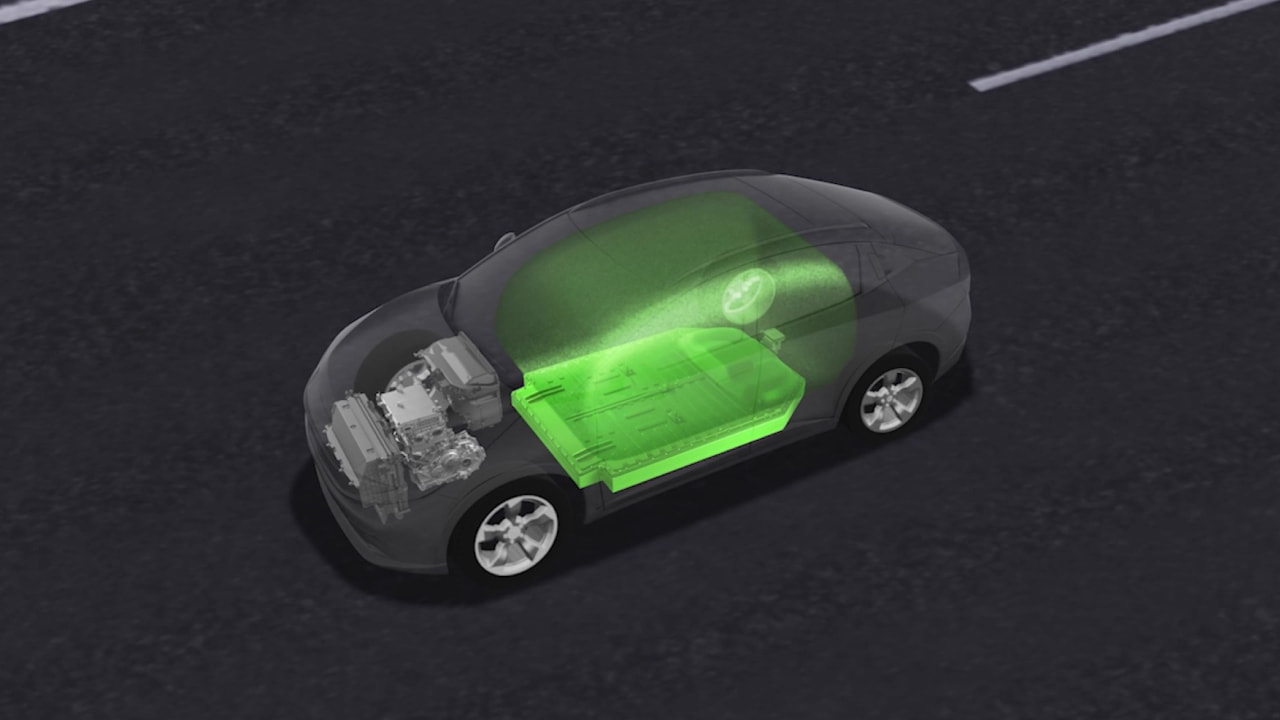
Electric vehicle thermal conditioning functionality6:15
System operation
Air conditioning functionality is essential for maintaining cabin comfort, but temperature regulation requires energy. In particular, heating the cabin during winter consumes significant energy. Since EVs lack heat-generating components like internal combustion engines, they require highly efficient heating performance. Additionally, maintaining the battery within an optimal temperature range is critical to maximizing its performance. When the battery temperature is too low, regenerative braking may be insufficient and fast-charging capability can decline. Conversely, elevated temperatures caused by fast charging or high-load driving can negatively affect both performance and battery lifespan.
Although both heating and cooling require energy, this system enables more efficient temperature regulation through advanced thermal conditioning functionality.
The thermal conditioning functionality combines the thermal circuits of the cabin, battery and powertrain. It repurposes heat generated during driving and charging — which would otherwise be wasted — for cabin air conditioning and battery temperature control. It also intelligently switches cooling methods to enhance overall energy efficiency across the vehicle.
Furthermore, the system is linked to an intelligent navigation system, optimizing thermal conditioning based on the selected drive route.

*1 HVAC: heating, ventilation and air conditioning
*2 OBC: onboard charger
System mechanism
Cabin thermal management
Heat pump air conditioning system with dehumidification heating
Nissan pioneered the adoption of heat pump technology globally with the first generation Nissan LEAF and has continuously developed energy-efficient HVAC systems. While electric heaters consume a significant amount of power during heating, a heat pump system can transfer ambient heat into the cabin via refrigerant circulation. This allows for a substantial reduction in energy consumption compared to conventional electric heaters.
Conventional heat pump systems typically rely on supplemental electric heaters to regulate temperature during low-load heating and cooling conditions. In contrast, the dehumidifying heat pump system utilizes an electronically controlled valve that precisely manages liquid flow and routing. This eliminates the need for electric heaters, enabling significant reductions in power consumption.
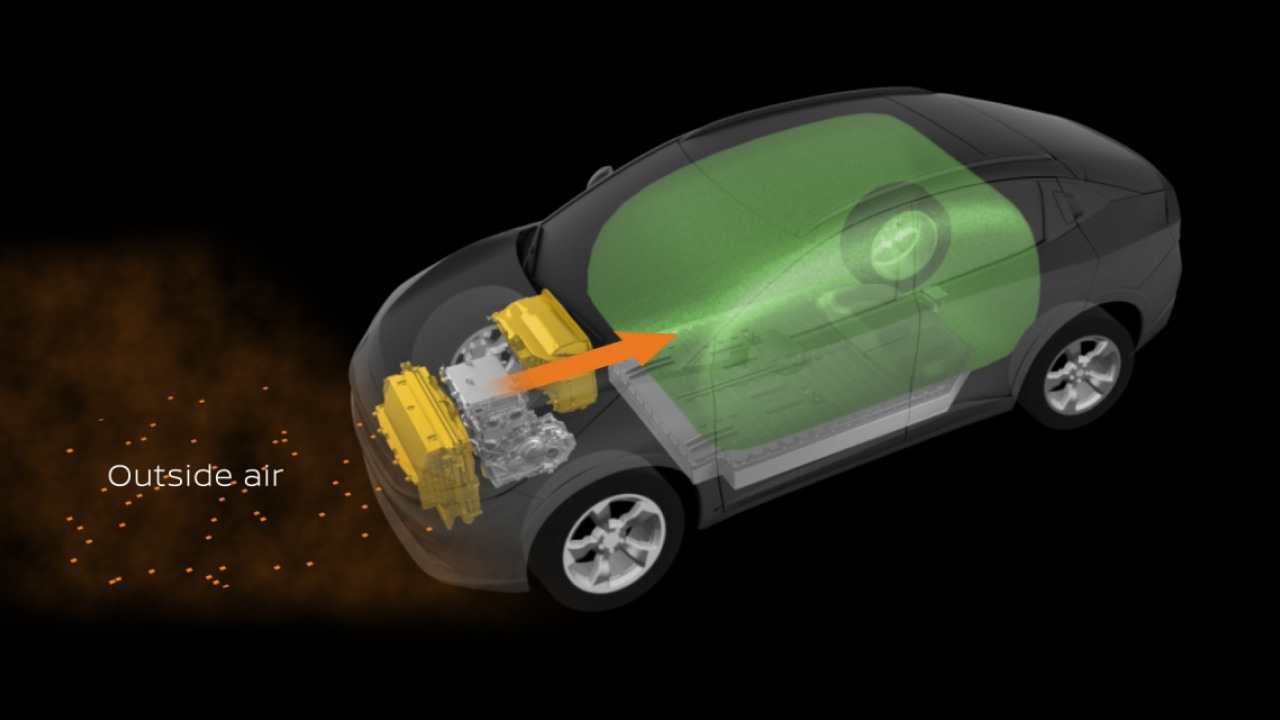
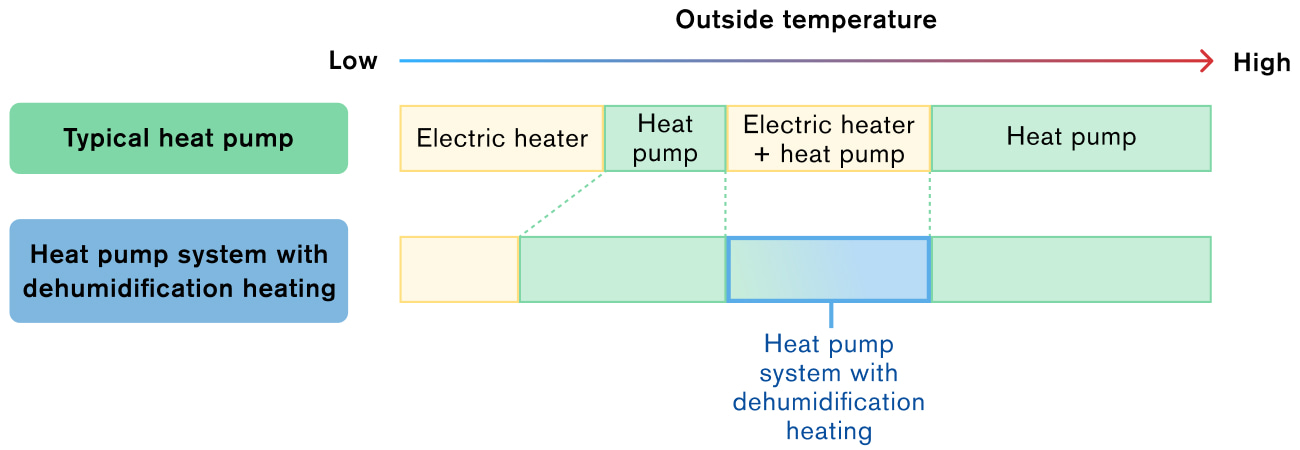
Waste heat utilization for cabin heating
The thermal conditioning functionality captures heat generated by the battery and electric powertrain during driving and charging. This heat is transferred via liquid to a chiller, where it is then conveyed to the thermal circuit. By utilizing this waste heat during cabin heating, the system reduces the load on the HVAC control unit and significantly lowers overall power consumption and potentially extending EV driving range.
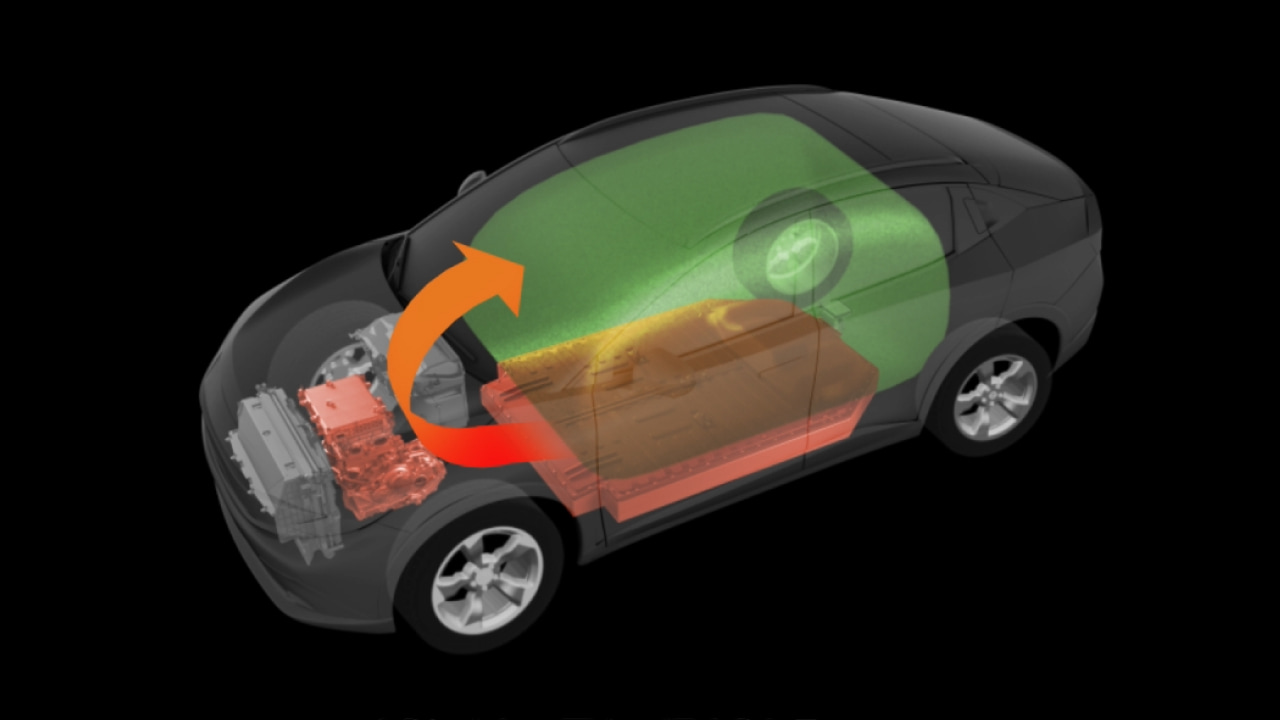
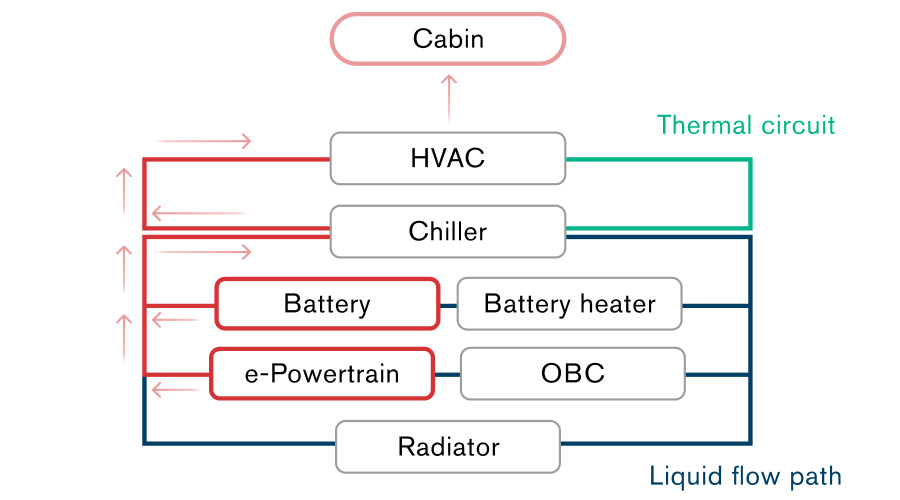
Battery thermal management
Battery preheating control (waste heat utilization/intelligent navigation-linked function)
When charging at home, the on board charger generates heat. This thermal conditioning functionality repurposes that heat to warm the battery, helping bring it closer to its optimal operating temperature. As a result, regenerative braking can be fully utilized immediately after driving begins, contributing to extended driving range.
Additionally, a new intelligent navigation-linked thermal conditioning function optimizes battery warming based on the selected drive route. When users input a destination, the system assesses the route to determine the load, identifying scenarios like severe hills and extended freeway driving. With this information, the system automatically adjusts the battery warming mode to conserve energy.
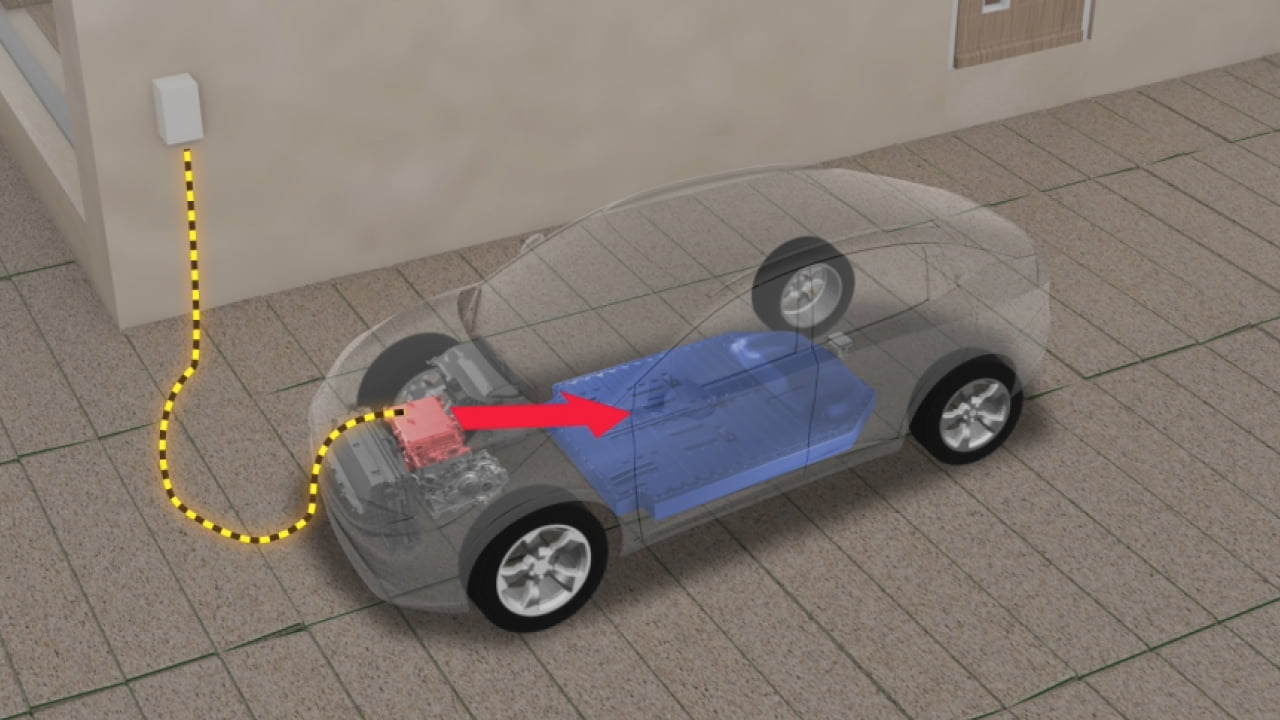
Heat from OBC used for battery
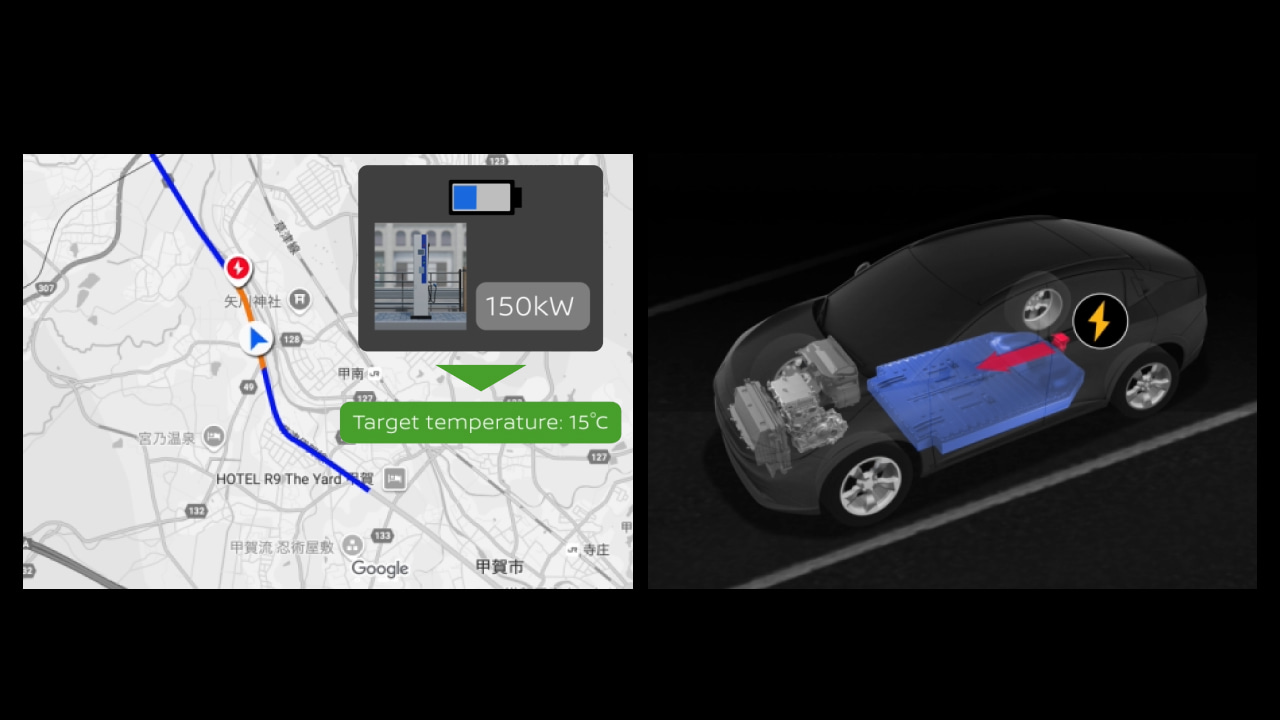
Temperature rise control by navilink function
Cooling control (mode switching/intelligent navigation-linked function)
The thermal conditioning functionality automatically switches between two cooling methods based on outside temperature and battery conditions. When strong cooling is required, it activates a refrigerant-based cooling system. Under lighter load conditions, it prioritizes radiator cooling using airflow generated during driving, thereby reducing energy consumption during cooling operations.
Through an intelligent navigation-linked function, the system predicts route load and automatically selects the most energy-efficient cooling method for battery temperature management. Route load is estimated using factors such as road gradient, real-time average speed, traffic conditions and HVAC usage.
When the load is predicted to be low, the system automatically adjusts the battery-cooling mode to conserve energy by utilizing radiator cooling. Alternatively, when the load is predicted to be high, it switches to refrigerant-based cooling. This functionality is also permitting a temporary adjustment in the battery’s acceptable temperature during fast charging to allow for increased charging capacity.
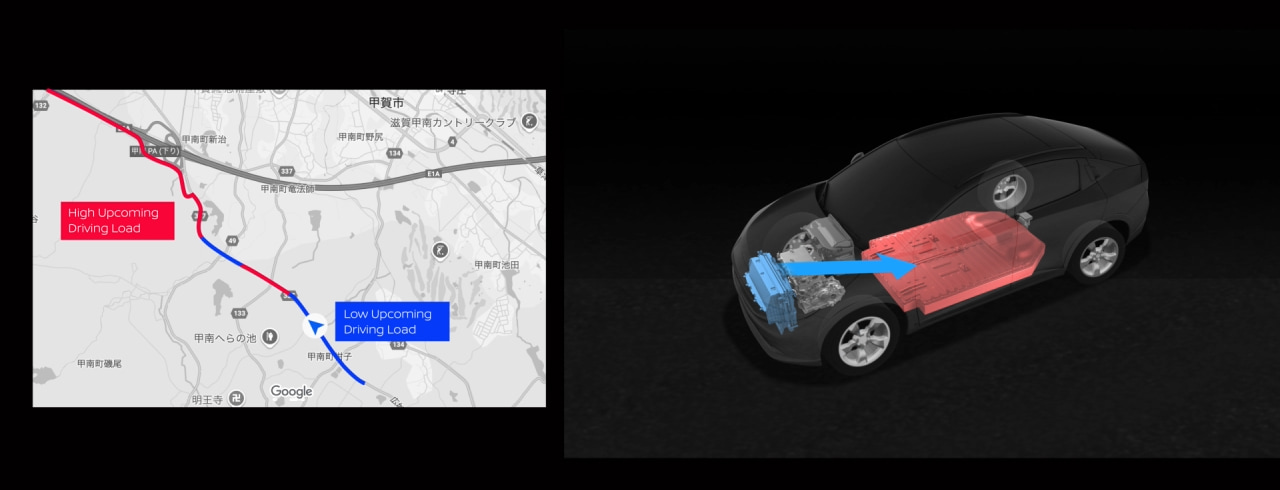
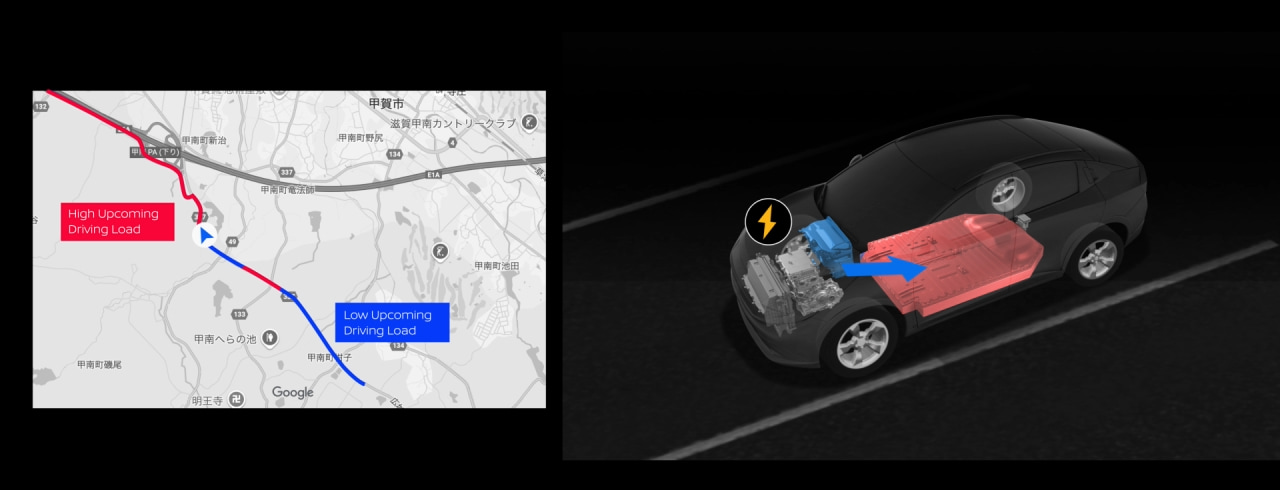
Cooling control with intelligent navigation-linked function

